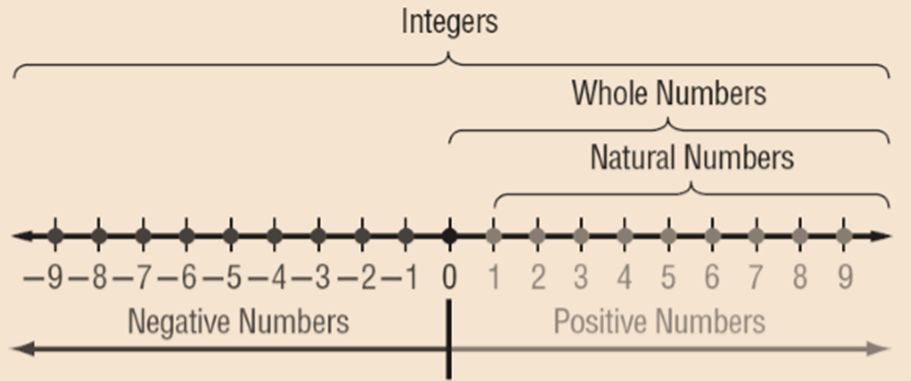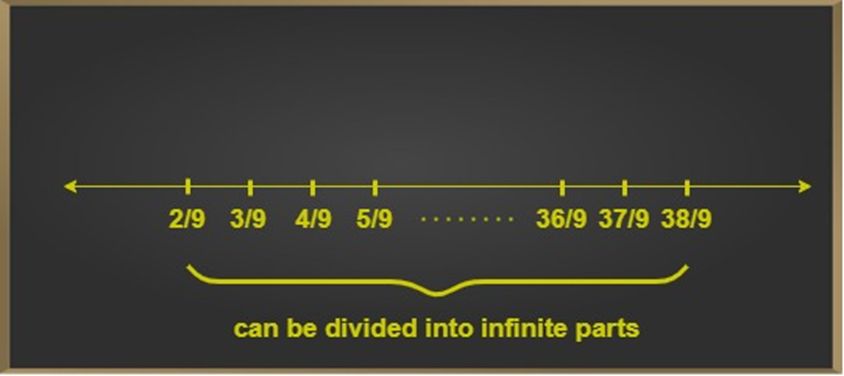- Books Name
- class 8 th Mathematics Book
- Publication
- ReginaTagebücher
- Course
- CBSE Class 8
- Subject
- Mathmatics
Rational numbers in number line and between two numbers
Representation of rational numbers on the number line,
On the number line, we can represent the Natural numbers, whole numbers and integers as follows

Rational Numbers can be represented as follows

Rational numbers between two rational numbers with same denominator,
There could be n number of rational numbers between two rational numbers. There are two methods to find rational numbers between two rational numbers.
Method 1
We have to find the equivalent fraction of the given rational numbers and write the rational numbers which come in between these numbers. These numbers are the required rational numbers.
Example
Find the rational number between 1/10 and 2/10.
Solution
As we can see that there are no visible rational numbers between these two numbers. So we need to write the equivalent fraction.
2/10 = 20/100((multiply the numerator and denominator by 10)
Hence, 2/100, 3/100, 4/100……19/100 are all the rational numbers between 1/10 and 2/10.
Method 2
We have to find the mean (average) of the two given rational numbers and the mean is the required rational number.
Example
Find the rational number between 1/10 and 2/10.
Solution
To find mean we have to divide the sum of two rational numbers by 2.

3/20 is the required rational numbers and we can find more by continuing the same process with the old and the new rational number.
Remark: 1. This shows that if p and q are two rational numbers then (p + q)/2 is a rational number between p and q so that p < (p + q)/2 < q.
2. There are infinite rational numbers between any two rational numbers
Rational numbers between two rational numbers with different denominator
Let us suppose the rational number f1 = p1/q1 and rational number f2 = p2/q2.
The following steps are performed to find one or more rational numbers between a pair of given rational numbers f1 and f2:
Step 1: Check the denominator values of both the fractions, that is compare the values of q1 and q2.
Step 2: If both the denominators are equal, that is q1 = q2, the numerators are then compared, that is the values of p1 and p2 are checked.
Step 3: If numerators differ by a large number, then we add any small constant integer value to the smaller numerator, keeping the denominator same. The rational numbers thus become p1/q1 and p2/q1 (since q1 = q2). Two cases may arise :
- p1 > p2 by a large amount, then we can add any numerical value to p1 such that it is less than p2, keeping the denominator same.
- p1 < p2 by a large amount, then we can add any numerical value to p2 such that it is less than p1, keeping the denominator same.
Step 4: If numerators differ by small value, then we can multiply both the rational numbers by a large constant value and follow first sub point, of adding a small constant integer to the smaller numerator. Multiplying the rational numbers by a large constant values increases the gap in the values of p1 and p2.

Since the denominators are the same, we find fractions by adding 1 to a smaller numerator, that is, f1 numerator = 2.
3/9, 4/9, 5/9, 6/9

 ReginaTagebücher
ReginaTagebücher
